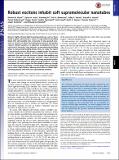| dc.contributor.author | Rebentrost, Frank Patrick | |
| dc.contributor.author | Lloyd, Seth | |
| dc.contributor.author | Nelson, Keith Adam | |
| dc.contributor.author | Bawendi, Moungi G. | |
| dc.contributor.author | Eisele, Dorthe M. | |
| dc.contributor.author | Arias, Dylan H. | |
| dc.contributor.author | Fu, Xiaofeng | |
| dc.contributor.author | Bloemsma, Erik A. | |
| dc.contributor.author | Steiner, Colby P. | |
| dc.contributor.author | Jensen, Russell A. | |
| dc.contributor.author | Eisele, Holger | |
| dc.contributor.author | Tokmakoff, Andrei | |
| dc.contributor.author | Nicastro, Daniela | |
| dc.contributor.author | Knoester, Jasper | |
| dc.date.accessioned | 2015-02-05T18:18:08Z | |
| dc.date.available | 2015-02-05T18:18:08Z | |
| dc.date.issued | 2014-08 | |
| dc.date.submitted | 2013-12 | |
| dc.identifier.issn | 0027-8424 | |
| dc.identifier.issn | 1091-6490 | |
| dc.identifier.uri | http://hdl.handle.net/1721.1/93791 | |
| dc.description.abstract | Nature's highly efficient light-harvesting antennae, such as those found in green sulfur bacteria, consist of supramolecular building blocks that self-assemble into a hierarchy of close-packed structures. In an effort to mimic the fundamental processes that govern nature’s efficient systems, it is important to elucidate the role of each level of hierarchy: from molecule, to supramolecular building block, to close-packed building blocks. Here, we study the impact of hierarchical structure. We present a model system that mirrors nature’s complexity: cylinders self-assembled from cyanine-dye molecules. Our work reveals that even though close-packing may alter the cylinders’ soft mesoscopic structure, robust delocalized excitons are retained: Internal order and strong excitation-transfer interactions—prerequisites for efficient energy transport—are both maintained. Our results suggest that the cylindrical geometry strongly favors robust excitons; it presents a rational design that is potentially key to nature’s high efficiency, allowing construction of efficient light-harvesting devices even from soft, supramolecular materials. | en_US |
| dc.description.sponsorship | United States. Dept. of Energy. Office of Basic Energy Sciences (Energy Frontiers Research Center. Grant DE-SC0001088) | en_US |
| dc.description.sponsorship | United States. Dept. of Energy. Center for Excitonics | en_US |
| dc.description.sponsorship | Alexander von Humboldt-Stiftung (Feodor Lynen Research Fellowship) | en_US |
| dc.description.sponsorship | National Science Foundation (U.S.). Graduate Research Fellowship Program | en_US |
| dc.description.sponsorship | United States. Defense Advanced Research Projects Agency | en_US |
| dc.language.iso | en_US | |
| dc.publisher | National Academy of Sciences (U.S.) | en_US |
| dc.relation.isversionof | http://dx.doi.org/10.1073/pnas.1408342111 | en_US |
| dc.rights | Article is made available in accordance with the publisher's policy and may be subject to US copyright law. Please refer to the publisher's site for terms of use. | en_US |
| dc.source | National Academy of Sciences (U.S.) | en_US |
| dc.title | Robust excitons inhabit soft supramolecular nanotubes | en_US |
| dc.type | Article | en_US |
| dc.identifier.citation | Eisele, Dorthe M., Dylan H. Arias, Xiaofeng Fu, Erik A. Bloemsma, Colby P. Steiner, Russell A. Jensen, Patrick Rebentrost, et al. “Robust Excitons Inhabit Soft Supramolecular Nanotubes.” Proceedings of the National Academy of Sciences 111, no. 33 (August 4, 2014): E3367–E3375. | en_US |
| dc.contributor.department | Massachusetts Institute of Technology. Department of Chemistry | en_US |
| dc.contributor.department | Massachusetts Institute of Technology. Department of Mechanical Engineering | en_US |
| dc.contributor.department | Massachusetts Institute of Technology. Research Laboratory of Electronics | en_US |
| dc.contributor.mitauthor | Rebentrost, Frank Patrick | en_US |
| dc.contributor.mitauthor | Lloyd, Seth | en_US |
| dc.contributor.mitauthor | Nelson, Keith Adam | en_US |
| dc.contributor.mitauthor | Bawendi, Moungi G. | en_US |
| dc.contributor.mitauthor | Eisele, Dorthe M. | en_US |
| dc.contributor.mitauthor | Arias, Dylan H. | en_US |
| dc.contributor.mitauthor | Steiner, Colby P. | en_US |
| dc.contributor.mitauthor | Jensen, Russell A. | en_US |
| dc.relation.journal | Proceedings of the National Academy of Sciences of the United States of America | en_US |
| dc.eprint.version | Final published version | en_US |
| dc.type.uri | http://purl.org/eprint/type/JournalArticle | en_US |
| eprint.status | http://purl.org/eprint/status/PeerReviewed | en_US |
| dspace.orderedauthors | Eisele, Dorthe M.; Arias, Dylan H.; Fu, Xiaofeng; Bloemsma, Erik A.; Steiner, Colby P.; Jensen, Russell A.; Rebentrost, Patrick; Eisele, Holger; Tokmakoff, Andrei; Lloyd, Seth; Nelson, Keith A.; Nicastro, Daniela; Knoester, Jasper; Bawendi, Moungi G. | en_US |
| dc.identifier.orcid | https://orcid.org/0000-0003-2220-4365 | |
| dc.identifier.orcid | https://orcid.org/0000-0003-2358-6967 | |
| dc.identifier.orcid | https://orcid.org/0000-0002-2067-6716 | |
| dc.identifier.orcid | https://orcid.org/0000-0001-7804-5418 | |
| dc.identifier.orcid | https://orcid.org/0000-0002-6728-8163 | |
| mit.license | PUBLISHER_POLICY | en_US |
| mit.metadata.status | Complete | |
